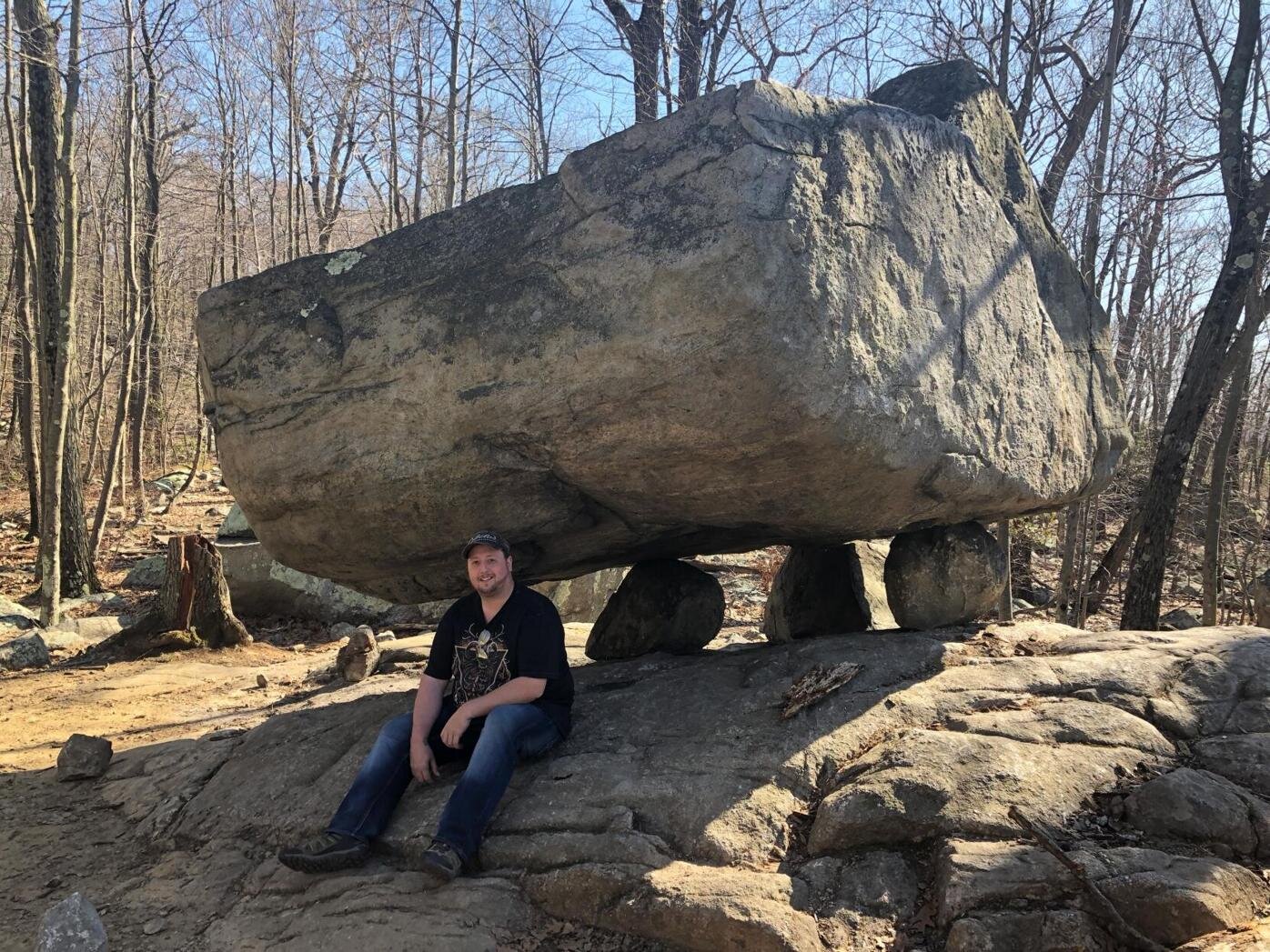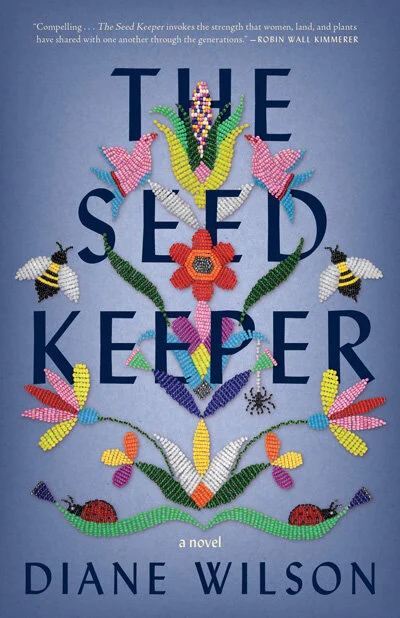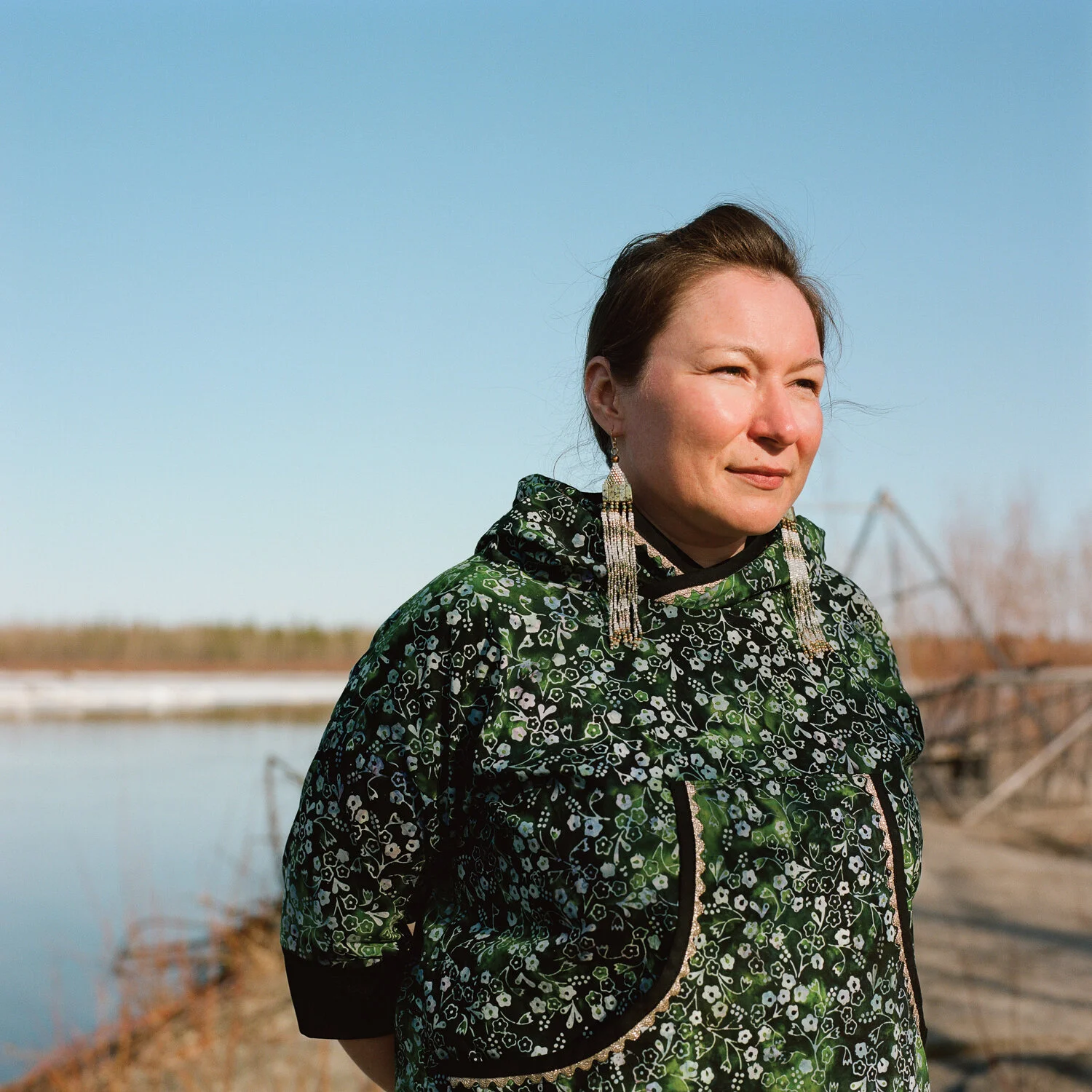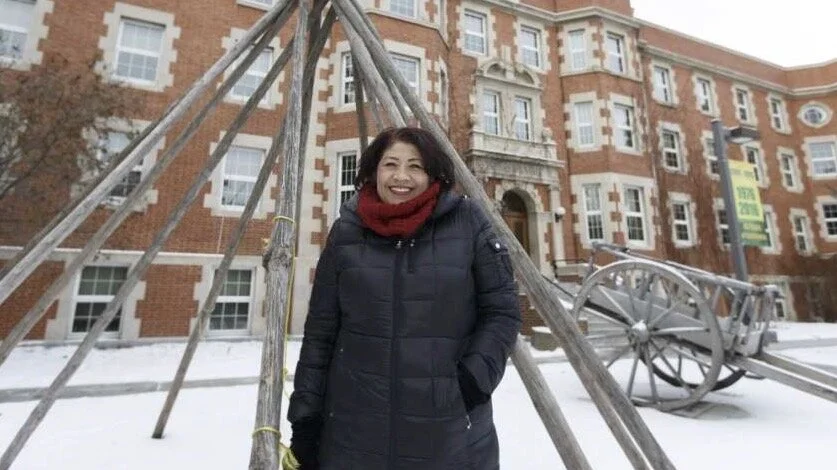Old curving stone walls, rock cairns, underground chambers, standing stones, and other rock landscapes, long dismissed as agricultural field clearing, ice houses, or colonial root cellars, are increasingly being identified as sacred Native American sites in origin, sometimes going back thousands of years and often containing precise astronomical alignments.
Read MoreDiane Wilson’s new novel explores the relationship between seeds and humans, and how our survival and abundance are intertwined.
Read MoreEva Dawn Burk stands on the bank of the Tanana River in late April in her home village of Nenana, Alaska. Burk is a graduate student at the University of Alaska Fairbanks, who is developing biomass-heated greenhouses for rural Native communities.
From working on science technology issues in Indigenous communities, Kim TallBear is aware of the perception that Western science and Indigenous knowledge are separate things.
TallBear, an associate professor in the University of Alberta's faculty of Native studies, created a course called Indigenous Peoples and Technoscience.
Read MoreThe founder of makeup brand Prados Beauty has overcome generational trauma and personal struggle. Now, she’s giving back through her artistry.
Read MoreColossal pyramid structures in the Americas as old as those in Egypt? The Sacred City of Caral-Supe, in central coastal Peru, boasts an impressive complex of ancient monumental architecture constructed around 2600 B.C., roughly the same time as the earliest Egyptian pyramid. Archaeologists consider Caral one of the largest and most complex urban centers built by the oldest known civilization in the Western Hemisphere.
Read MoreIf music had been offered more during my secondary education, maybe I would’ve been more prepared and confident?
Read MoreNative Americans have been systematically dispossessed of their ancestral lands for more than a century, thanks to federal land management policies. But a spate of new real estate projects highlights efforts to reclaim that territory, as tribes invest in land development in an effort to diversify their revenue base and support their members.
Read MoreArchaeologists have unearthed a rare trove of more than 80 metal objects in Mississippi thought to be from Hernando de Soto's 16th-century expedition through the Southeast. Many of the objects were repurposed by the resident Chickasaws as household tools and ornaments, an unusual practice at a time when European goods in North America were few and often reserved for leaders.
Read MoreGerald Torres, who joined the Yale School of the Environment (YSE) faculty in January as a professor of environmental justice, talks about two pivotal events in his career that continue to inform and inspire his work and teaching on environmental and social justice.
Read MoreFor years, Darryl Peasley and Sherry Gould, two friends and members of the Nulhegan Band of the Coosuk Abenaki Nation heard stories about various Native American sites dotting the region around their small southern New Hampshire hometowns.
Read MoreNative American producers have long been left out of the agricultural conversation. Now that regenerative agriculture is trending, these growers show that caring for full ecosystems isn’t a new idea, it’s deeply traditional.
The California Indian Museum and Cultural Center is using a significant USDA grant to reconnect these tribal community members to traditional knowledge and practices, including foodways.
Read MoreNative Americans are transporting a 5,000-pound totem pole from Washington state to Washington, D.C., over two weeks in July to raise awareness about protecting land that they consider sacred, according to the Washington Post.
Why it matters: The effort, which organizers are calling the “Red Road to D.C.,” has already raised $500,000 from nonprofits, sponsors, and tribal groups.
Read MoreLast week, Native youth from New Mexico’s 23 Native nations, tribes, and pueblos provided ideas for future government initiatives and received strategies to improve their mental health at the virtual 2021 Indigenous Youth Wellness Summit.
Youth participants shared successful ways in which their tribal governments responded to the pandemic, the need to increase awareness of existing mental health resources, and their experiences during the pandemic, according to Kalee Salazar, the Special Projects Coordinator of the New Mexico Indian Affairs Department (NMIAD).
Read MoreLouise Erdrich’s (Chippewa) novel “The Night Watchman” and Natalie Diaz’s (Mojave) poem collection “Postcolonial Love Poem” won the Pulitzer Prizes for Fiction and Poetry, respectively, on Friday. Finalists for other prizes included a Native cartoonist’s work about current events; a true story about an Indigenous woman’s search for justice in Indian Country; and a book that explores the role of Native peoples in the Civil War.
Erdrich’s “The Night Watchman” follows a Chippewa councilman and a young plant worker who embarks on a dangerous trip to find her older sister, according to the publisher’s description. It is set during the termination period of the 1950s and based on the life of Erdrich’s grandfather, who “carried the fight against Native dispossession from rural North Dakota all the way to Washington, D.C.,” according to the publisher.
Read More



















